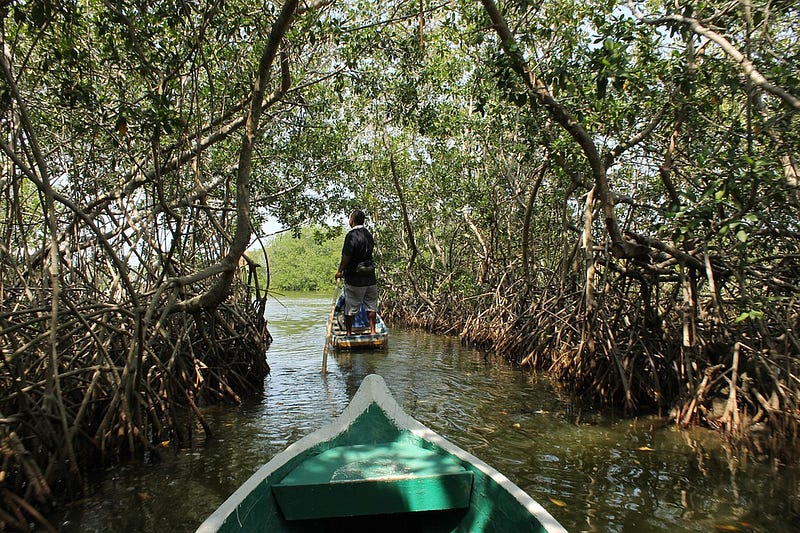Mangroves: The Coastal Forests

By Brian Cho, Bioengineering, 2023
As the waves ebb and flow on the coast, they crash into the thick, fibrous roots of the mangrove tree. As described by the National Ocean Service, the forests “can be recognized by their dense tangle of prop roots that make the trees to be standing on stilts above the water.” These trees line the coasts of different beaches and serve many different purposes. The roots in particular serve a very useful purpose for the tree and coastal ecosystems as a whole. With long, fibrous, but sturdy, roots, mangrove trees slow the force of ocean tides, reducing erosion and providing a perfect shelter for ocean species to hide from open water predators. As a result, these trees support diverse ecosystems holding a variety of species.
Quite remarkably, mangrove trees can survive in extremely salty conditions. The key to success lies within the trees’ ability to remove salt from their systems. The mangrove trees are classified into two categories: salt-secretors and salt-blockers. Salt secretors are able to remove the salt they absorb by moving them to specialized leaves. The salt crystals aggregate on the leaves and when the leaf dies, the salt falls along with it. Salt-blockers, in contrast, contain large amounts of suberin between the root cells’ cell walls and plasma membranes. A combination of the Casparian strip, aquaporins, and control apoplastic transport allows salt-blocker mangrove trees to thrive under the saltiest of conditions.
As a result, these trees support diverse ecosystems holding a variety of species.
Yet despite the natural adaptations for surviving harsh conditions, the mangroves are facing global destruction. The Smithsonean reports that over “35 to 97 square miles of mangrove forests [are lost] per year.” Humans have been causing the destruction of coastal ecosystems by digging up oil and polluting the ocean. The oil chokes the oxygen from the surrounding water, stopping the roots from absorbing necessary nutrients. In addition, pollutants in the water suffocate the trees and the life the trees support. The recent decrease in mangrove populations has devastated local ecosystems, driving various fish species out of their homes.
Mangroves are the keystone species of the world’s coastal ecosystems. Without them, our beaches and islands would look quite barren compared to thriving forests of life that was once there.
Annals of Botany (2015). DOI: 10.1093/aob/mcu174